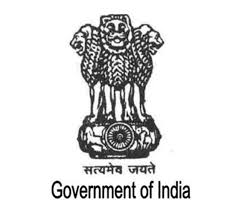The Indus Valley civilization, one of the world's oldest, flourished during the 3rd and 2nd millennia B.C. and extended into northwestern India. Aryan tribes from the northwest infiltrated the Indian subcontinent about 1500 B.C.; their merger with the earlier Dravidian inhabitants created the classical Indian culture. The Maurya Empire of the 4th and 3rd centuries B.C. - which reached its zenith under ASHOKA - united much of South Asia. The Golden Age ushered in by the Gupta dynasty (4th to 6th centuries A.D.) saw a flowering of Indian science, art, and culture. Islam spread across the subcontinent over a period of 700 years. In the 10th and 11th centuries, Turks and Afghans invaded India and established the Delhi Sultanate. In the early 16th century, the Emperor BABUR established the Mughal Dynasty, which ruled India for more than three centuries. European explorers began establishing footholds in India during the 16th century.
By the 19th century, Great Britain had become the dominant political power on the subcontinent. The British Indian Army played a vital role in both World Wars. Years of nonviolent resistance to British rule, led by Mohandas GANDHI and Jawaharlal NEHRU, eventually resulted in Indian independence, which was granted in 1947. Large-scale communal violence took place before and after the subcontinent partition into two separate states - India and Pakistan. The neighboring nations have fought three wars since independence, the last of which was in 1971 and resulted in East Pakistan becoming the separate nation of Bangladesh. India's nuclear weapons tests in 1998 emboldened Pakistan to conduct its own tests that same year. In November 2008, terrorists originating from Pakistan conducted a series of coordinated attacks in Mumbai, India's financial capital. Despite pressing problems such as significant overpopulation, environmental degradation, extensive poverty, and widespread corruption, economic growth following the launch of economic reforms in 1991 and a massive youthful population are driving India's emergence as a regional and global power.
India is a federal parliamentary republic.
Source: CIA World Factbook
Members:
Resources
Displaying 81 - 85 of 91Uttarakhand Scheduled Castes Sub Plan and Tribal Sub Plan (Planning, Allocation and Utilization) Act, 2013 (No. 33 of 2013).
An Act, consisting of seven Chapters and applying to the whole State of Uttarakhand.
Arunachal Pradesh Ancient Monuments, Archaeological Sites and Remains Preservation Act, 1987 (Act No. 4 of 1990).
This Act provides for the preservation of ancient and historical monuments and archaeological sites and remains of national importance and for the regulation of archaeological activities in Arunachal Pradesh.The Government will have the power to declare ancient monuments or archaeological sites, etc. to be protected monuments or protected areas. The Government may purchase, take lease or assume the guardianship of any protected monument, for its protection or preservation.
Andhra Pradesh Irrigation Utilization and Command Area Development Act, 1984 (Act No. 15 of 1984).
This Act provides for the involvement of farmers in irrigation utilization with the Command Area Development concept, and for the regulation, maintenance and repair of irrigation systems.The Act provides for the establishment of a Command Area Development Authority and for the appointment of Commissioner Pipe Committees and other agencies.
Land Acquisition Act, 1894.
This Act, consisting of eight Parts, establishes the requirements for land acquisition. It specifies costs, prices and other financial matters related to above mentioned land acquisition.
Amended by: Land Acquisition (Gujarat Amendment) Act, 1980 (No. 11 of 1981). (1981-03-18)
Haryana Municipal Common Lands (Regulation) Act, 1974.
This Haryana Municipal Common Lands (Regulation) Act, 1974 (No.


